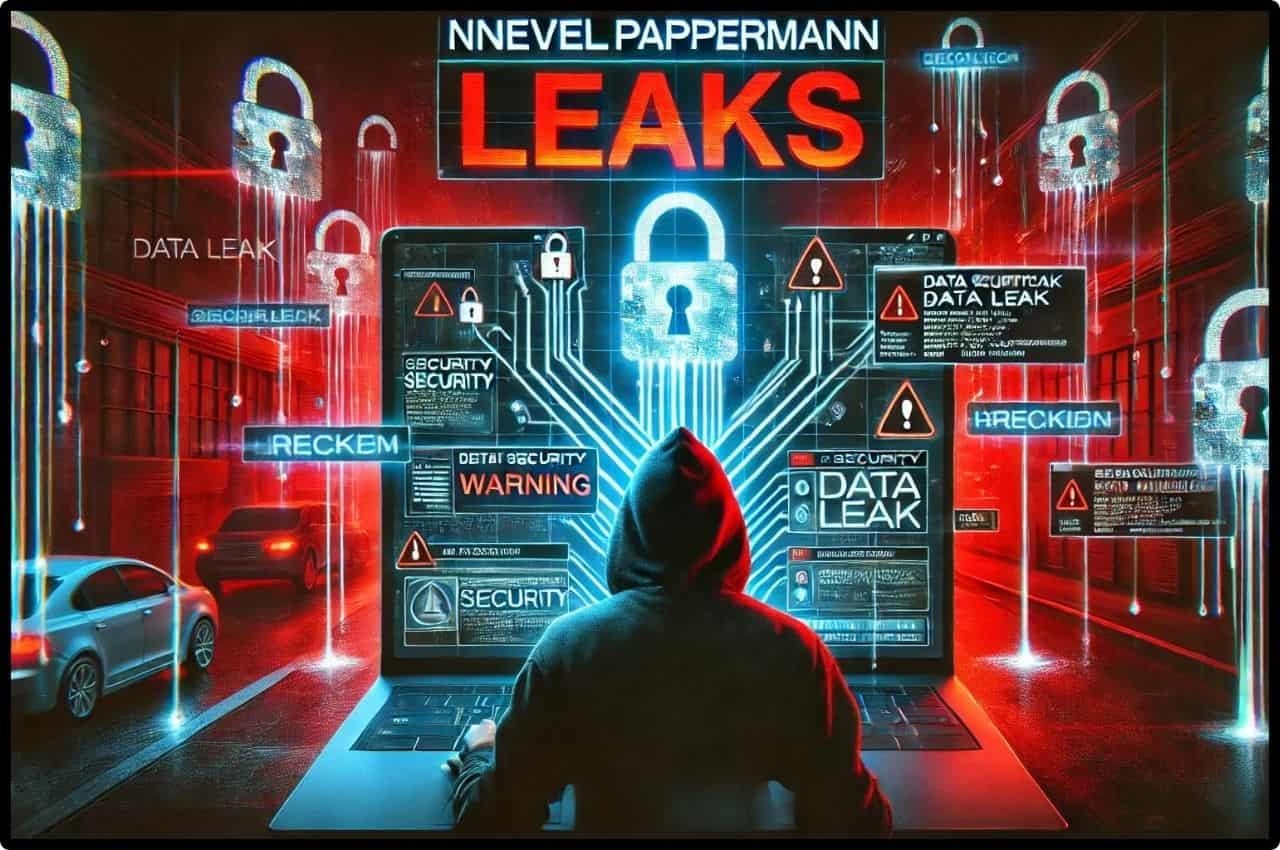Nnevelpappermann Leaks: Understanding the Phenomenon, Privacy Issues, and Impact
The increasing dependence on technology has led to new data privacy and security challenges in today’s digital world. Data leaks have become a significant concern for individuals and organizations. One such name that has gained attention recently is Nnevelpappermann Leaks.
While this may not be a widely recognized term, it represents a growing trend in which personal or sensitive information is exposed, often to the detriment of the individual or organization involved.
This article delves into the phenomenon of Nnevelpappermann Leaks, exploring what the term represents, the potential implications of such leaks, how they occur, and the measures that can be taken to protect against them. We will also discuss the broader context of data leaks in the digital age and their growing significance.
What Are Nnevelpappermann Leaks?
Nnevelpappermann Leaks refers to instances where sensitive personal or organizational data is unintentionally or maliciously exposed to the public. This could include private communications, financial records, login credentials, intellectual property, or confidential information.
The term “Nnevelpappermann” might be specific to a particular incident or entity, reflecting a pattern of breaches or leaks associated with that name, or it could be a coined phrase used to illustrate a more significant trend in data exposure.
Leaks like these are often the result of a combination of human error, system vulnerabilities, or targeted attacks by cybercriminals. In many cases, leaked information is used for malicious purposes, such as identity theft, financial fraud, or disseminating sensitive content without consent.
Although the context surrounding Nnevelpappermann Leaks may be unclear, the term likely points to a broader issue—an increasing number of leaks occurring across industries and sectors, affecting individuals, businesses, and governments alike.
How Do Leaks Happen?
To understand the significance of Nnevelpappermann Leaks, it’s essential to know how such leaks occur. Data breaches can happen in several ways, and they often exploit weaknesses in security systems or human errors. The following are some common ways data leaks occur:
1. Phishing Attacks: Phishing remains one of the most common ways data leaks happen. In phishing attacks, cybercriminals pose as legitimate entities and trick individuals into revealing sensitive information, such as login credentials, financial details, or other personal data. These attacks are often carried out via emails or fraudulent websites designed to look like genuine platforms.
2. Weak Passwords: Another common reason for data leaks is using weak or easily guessable passwords. Cybercriminals can exploit weak passwords through brute force attacks, trying different combinations of characters until they crack the password. Once access is gained, sensitive information can be stolen and potentially leaked.
3. Insider Threats: Not all data leaks occur due to external threats. Insider threats, where employees or contractors with legitimate access to data intentionally or unintentionally expose information, are also a common cause of leaks. This can happen due to malicious intent, negligence, or poor data handling.
4. Poor Security Protocols: Organizations that fail to implement proper security protocols are at higher risk of experiencing leaks. This can include not encrypting sensitive data, using outdated software vulnerable to exploits, or failing to restrict access to confidential information based on role or need.
5. System Vulnerabilities: Outdated or unpatched software can be a significant risk factor. Hackers often exploit vulnerabilities in systems, applications, or servers to gain unauthorized access to databases or other sensitive information. Once inside the system, attackers can extract and potentially leak valuable data.
The Consequences of Nnevelpappermann Leaks
Leaks like Nnevelpappermann Leaks can have far-reaching consequences for the individuals whose data is compromised and the organizations responsible for protecting that data. Here are some of the potential outcomes:
1. Identity Theft: One of the most immediate risks of data leaks is identity theft. Cybercriminals can use personal information, such as Social Security numbers, credit card details, and addresses, to assume another person’s identity. This can lead to unauthorized financial transactions, loans, or even legal issues for the victim.
2. Financial Losses: Financial losses can occur not only for individuals but also for companies. If a company’s sensitive data, such as intellectual property or trade secrets, is leaked, it can lose competitive advantage, diminished customer trust, and reputational damage. Additionally, organizations may face significant fines and penalties from regulators for failing to protect customer data.
3. Reputational Damage: Data leaks can lead to severe reputational harm for organizations. When customers’ data is leaked, trust erodes, and the company may face backlash from the public and media. Rebuilding that trust can take years; sometimes, companies may never fully recover.
4. Legal and Regulatory Consequences: In many regions, laws like the General Data Protection Regulation (GDPR) in Europe or the California Consumer Privacy Act (CCPA) in the United States impose strict penalties on companies that fail to protect personal data. Companies that experience data leaks may face legal action from affected individuals and hefty fines from regulatory bodies.
5. Emotional and Psychological Impact: For individuals, having personal data leaked can lead to emotional distress and anxiety. The knowledge that one’s private information is in the hands of strangers can be a traumatic experience, mainly if the leaked data includes sensitive personal details, such as medical records or private communications.
Preventing Data Leaks Like Nnevelpappermann Leaks
Preventing data leaks requires technical solutions, good security practices, and ongoing vigilance. Whether you’re an individual looking to protect your data or an organization seeking to safeguard your customers’ information, several steps can be taken to minimize the risk of leaks.
1. Use Strong, Unique Passwords: One of the simplest yet most effective ways to prevent data leaks is to use strong, unique passwords for every account. A strong password typically includes a combination of letters, numbers, and symbols and should be easily guessable .. People can create and safely store complicated passwords with the use of password managers.
2. Implement Multi-Factor Authentication (MFA): MFA adds an extra layer of security to online accounts by requiring users to provide two or more verification forms. These could include a combination of something the user knows (a password), something they have (a phone), or something they are (a fingerprint). Even if a password is compromised, MFA can prevent unauthorized access.
3. Encrypt Sensitive Data: Encryption is critical for protecting sensitive information for organizations. Even if data is intercepted or accessed by unauthorized parties, it cannot be read without the proper decryption key Data should be encrypted while it is in transit as well as when it is at rest.
4. Regularly Update Software and Systems: Outdated software and systems are a significant source of security vulnerabilities. Organizations and individuals should regularly update their operating systems, applications, and security software to patch known vulnerabilities. Automated updates help ensure that systems stay secure.
5. Train Employees on Security Best Practices: Since insider threats and human error are common causes of data leaks, organizations must train employees on security best practices. This includes recognizing phishing attempts, handling sensitive data correctly, and understanding the importance of strong password policies.
6. Monitor and Audit Systems: Organizations should regularly monitor and audit their systems for suspicious activity. Automated tools can help detect intrusions or unusual behavior that could indicate an impending data leak. By addressing issues quickly, organizations can mitigate the damage caused by a breach.
The Role of Governments and Regulations in Preventing Leaks
Governments worldwide increasingly recognize the need to regulate data collection, storage, and protection. High-profile leaks have led to stringent privacy regulations that hold organizations accountable for safeguarding personal information.
One example is the General Data Protection Regulation (GDPR) in Europe. GDPR requires organizations to implement robust security measures to protect personal data and imposes severe penalties for non-compliance. Similarly, the California Consumer Privacy Act (CCPA) gives consumers greater control over their data and mandates businesses to protect it.
These regulations emphasize the importance of data protection and set clear guidelines for organizations to follow. However, regulations alone are not enough to prevent leaks. A proactive approach to data security, combined with robust legal frameworks, is necessary to combat the growing threat of data breaches.
Conclusion
Nnevelpappermann Leaks represents a concerning trend in the broader data security and privacy context. As the digital world expands, individuals and organizations must remain vigilant in protecting sensitive information. Data leaks can have devastating consequences, including financial losses, identity theft, reputational damage, and legal penalties.
By adopting strong security practices, such as using unique passwords, enabling multi-factor authentication, encrypting data, and staying informed about potential threats, individuals and organizations can significantly reduce their risk of falling victim to data leaks like Nnevelpappermann Leaks. As data privacy evolves, staying proactive is the best defense against the ever-present threat of information leaks.






